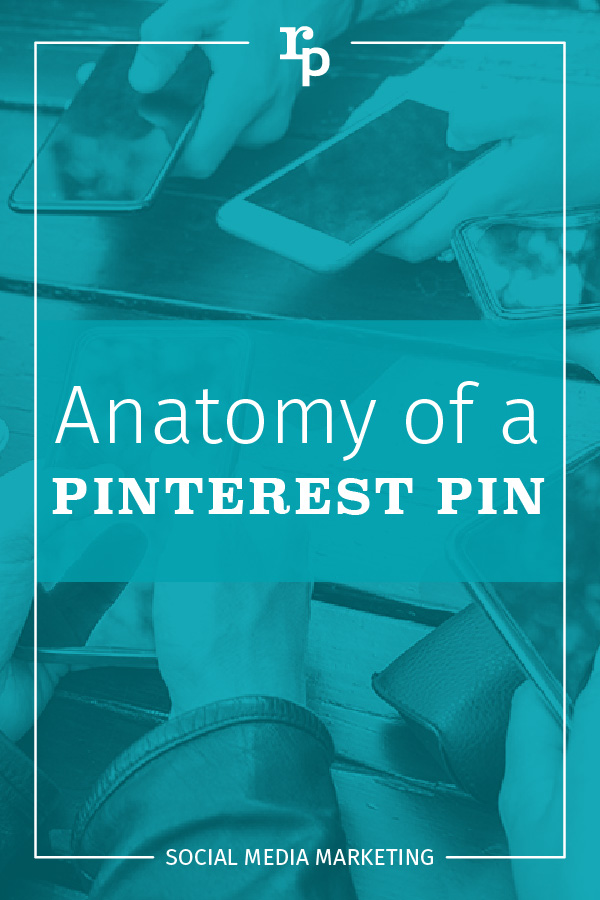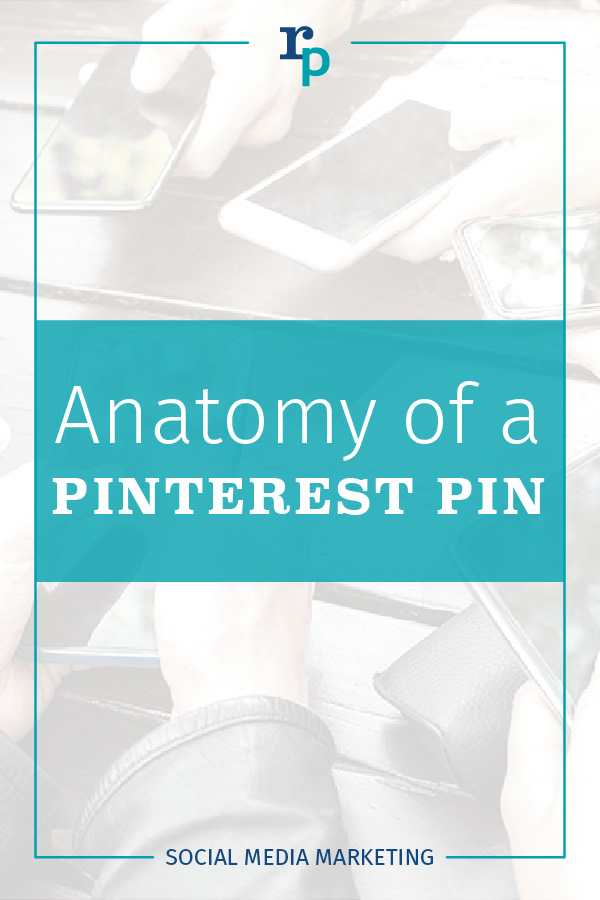Anatomy of a Pinterest Pin
Generating fresh pins using your own content, however, can be a more intimidating process. Having rich pins activated or using tools like the Pinterest Save Button helps, but any SEO optimizations you’ve made to attract Google spiders may cause those autogenerated titles to display a little funky. You may also run into problems with images provided if you haven’t planned ahead.
Pinterest Pin Lesson 1: The Image
As I have mentioned before, Pinterest is an image-driven platform. Knowing that, it’s pretty obvious that the image is the most important element of your pin. Screw this up and it won’t matter if you have a snappy title or a quality description. If your pin’s image doesn’t catch people’s attention, they’re not going to click it. It’s as plain and simple as that.
When designing your graphic, keep your demographic in mind. Approximately 75% of users are female, so softer, more feminine colors, fonts, and images genuinely do better than those with hard edges and dark, muddy colors. Don’t forget to include your logo.
The size of your pin also matters. Unlike many social media platforms, Pinterest prefers portrait-style images. The preferred aspect ratio is 2:3 and our recommended dimensions are 600×900 pixels. Anything smaller than that will easily pixelate and anything larger is unnecessary. There are exceptions to this rule of course, but unless you plan on sharing an occasional infographic, it is unwise to deviate from the 2:3 ratio. Just keep in mind that as of 2020, taller pins may require twice as much traffic to “earn” their place on users’ Smart Feeds. They also run the risk of being cropped on the feed.
Pinterest Pin Lesson 2: The Title
Let’s start with the head, or in this case, the title. Much like with email or other social media platforms, we want to keep this short and sweet. Pinterest sets a limit of 100 characters or less, but in reality, only the first 30 or so are going to show up in other users’ feeds. That means you need to lead with the most enticing information first.
The title is also where you want to be sure to sprinkle in any major keywords. If you are sharing from a niche blog, be sure to mention the niche somewhere in the title. It doesn’t have to be in the first 30 characters if it does not make sense. As long as you have it somewhere, Pinterest’s algorithm should catch it.
A good title doesn’t only entice users, it also adds a layer of validation. Even before my marketing days, I’d shy away from posts that were obviously created by a robot and found myself more drawn to authentic content. Leaving your title in SEO gobbledygook can give the impression that the pin is just there to exist instead of something created because the user has something they genuinely want to share. It’s a small touch that I learned early on that makes a huge difference.
Pinterest Pin Lesson 3: The Description
Think of your description the same way you’d handle the body of an email. Its purpose is to back up your title and provide additional context as to where your pin will lead users. With an extended 500 character limit, you have a little more room to play here. Just keep in mind that only the first 50 or so characters will actually display in the feed. Although you’ve already established your main keywords in the title, it doesn’t hurt to add a few hashtags at the end of your body copy as well.
When sharing a blog post, I typically recommend pulling a key sentence or two from the introduction to be used in the body copy. For landing pages, grab or write a couple of sentences explaining why users want to click your pin. Most importantly, don’t forget to end with some sort of call to action.
This call to action may be to read more, but NEVER use the phrasing “click here.” Much like Instagram and other social media platforms, Pinterest is now penalizing users for “clickbaity” language. Instead, use language like “learn more” or “listen to the full episode” to encourage interaction.
struggling with managing your brand’s social media presence?
Roundpeg’s team of experts may be able to help.
What is the recommended image size for a Pinterest pin?
600x900 pixels (or a 2:3 ratio)
What is the character limit for Pinterest titles?
100 characters (though only the first 30-25 characters will show up in newsfeeds)
What is the character limit for Pinterest descriptions?
500 characters (though only the first 50 or so characters will show up in newsfeeds)
This content is brought to you by Roundpeg, an Indianapolis content and social media marketing company.


